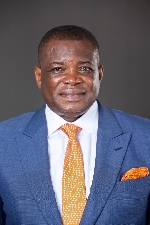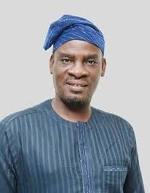The golden gamble of the Gold Coast is ‘galamsey’
 Illegal miners at work
Illegal miners at work
How does a young, budding entrepreneur write about galamsey, and also at arguably the most politically charged period in Ghana this century? Well, I do that by stepping away from the politics momentarily and focusing on the heart of the matter – what galamsey truly represents for Ghana. It’s more than a headline or a talking point; it’s a crossroads, one where survival and sustainability collide. Besides, both major political parties have condemned galamsey, so please, shoot not the messenger.
I write about galamsey because it is not just an environmental issue. It’s an economic, cultural, and moral one. It is a story of tough choices made in tougher circumstances, of communities trying to earn a living while unknowingly gambling away their future. And if we’re honest with ourselves, it’s also a reflection of our collective failure to offer better alternatives.
This isn’t about finger-pointing or taking sides. It’s about understanding the layers of complexity behind galamsey. It’s about recognising that while laws and policies are crucial, they alone won’t fix the problem. It’s about shining a light on the human stories, the missed opportunities, and the hidden costs that often get overlooked in the heat of political debates.
As a young entrepreneur, I see galamsey as a crisis but also as a lesson. It’s a stark reminder of what happens when short-term solutions overshadow long-term vision, when desperation trumps planning, and when we forget that the land we stand on is the foundation of everything we hope to build.
So, how do I write about galamsey in this politically charged era? By refusing to let the politics drown out the truth. By asking hard questions and exploring uncomfortable answers. And most importantly, by imagining a future where we don’t have to choose between survival and sustainability, because, hopefully by then, we would have created a system where they go hand in hand.
Let’s dive right in, shall we…
The Dual Reality of Galamsey
Imagine this: it’s early morning in a small Ghanaian mining town. A young man, barely in his twenties, trudges through a forested path, a shovel slung over his shoulder and hope in his eyes. He’s heading to a galamsey site, an illegal mining operation, to dig for gold. For him, today isn’t just another day. It’s another chance to earn something, to earn anything, to support his family. But what he doesn’t see, or perhaps doesn’t allow himself to think about, is the irreparable damage he’s leaving in his wake: poisoned rivers, stripped lands, and a future that might not sustain even the faintest glimmer of hope.
This is the dual reality of galamsey. On one hand, it’s a lifeline for thousands of Ghanaians trapped in the grip of poverty, offering them the means to survive today. On the other hand, it’s a ticking time bomb for our environment, our economy, and our collective future.
The tragedy of galamsey isn’t just in the destruction it causes. The tragedy lies in the choices that force people into it. How do you tell someone to stop mining illegally when it’s the only way they know to feed their children? How do you justify the long-term risks to someone who can barely make it through the short term? These aren’t easy questions, but they’re the ones we must face if we are to tackle this issue with both compassion and resolve.
Because here’s the thing: we cannot afford to sacrifice tomorrow for today. Every inch of land destroyed, every drop of water poisoned, is a debt we are borrowing from the next generation, a debt they’ll have to repay with interest. And that’s not just unfair; it’s unsustainable.
As we delve into the complexities of galamsey, let us keep one thought at the forefront: this isn’t about villains or victims. Galamsey is about choices, complex, imperfect choices, and the courage to imagine better ones.
The Intergenerational Cost of Borrowing Against Ghana’s Natural Future
Imagine this: a community finds itself in financial distress. To survive, they take a massive loan against their only source of wealth – their natural resources. They dig deep into the earth, extracting what they can and selling it at whatever price the market demands. They don’t think about how they’ll pay it back or the interest it’s accumulating. After all, survival today feels more urgent than planning for tomorrow.
This is precisely what galamsey is doing to Ghana. Every tree felled, every river poisoned, and every inch of soil degraded represents another “loan” taken out on our country’s future. But unlike financial loans, this one comes with no repayment terms, no interest rate caps, and no second chances. Once the land is barren, it’s barren. Once the water is undrinkable, it’s undrinkable. And once the gold is gone, it’s gone!
The intergenerational cost of galamsey isn’t just environmental. It’s economic and cultural. When we destroy our resources today, we rob future generations of opportunities we can only imagine. What industries could have thrived on the land ruined by illegal mining? What businesses could have blossomed by the rivers now choked with chemicals? What cultural practices tied to the sanctity of the land and water are we erasing in the process?
The painful irony is that the people involved in galamsey often don’t consider this cost, not because they don’t care but because they can’t afford to. For them, the future is a luxury. The present, with all its hunger and desperation, is all they can see. But for Ghana as a nation, turning a blind eye to this cost is just as irresponsible as it is catastrophic.
We owe it to ourselves and to those who will inherit this land to stop recklessly borrowing against Ghana’s natural future. While the gold in the ground may seem valuable now, the lives, industries, and ecosystems it sustains tomorrow are priceless.
Economics of Desperation vs. Economics of Hope
For many involved in galamsey, it’s not about greed but survival. When there are no jobs, no education, and no hope, even the most dangerous and destructive options start to look like opportunities. A shovel, a sieve, and a patch of land become the tools of a makeshift livelihood. And for a while, it works. Food appears on the table, and the illusion of progress takes root.
But here’s the truth: galamsey is a short-term fix with devastating long-term consequences. It’s an economy of desperation, one that sacrifices everything, including the land, water, and even lives, for the sake of immediate survival. And the tragedy is that this cycle feeds itself. As the land degrades and the rivers are poisoned, farming and fishing become impossible, forcing more people into galamsey. It’s a downward spiral that locks entire communities in poverty.
What if we could break this cycle? What if we could replace the economy of desperation with an economy of hope?
Imagine this: instead of risking their lives in illegal mines, young people are employed in agro-industrial zones, processing crops that thrive on the land galamsey once destroyed. Imagine communities working together to restore degraded lands, with support from government programmes and private partnerships. Imagine a future where rural areas are hubs of innovation, not desperation.
This isn’t just wishful thinking. We can do this. Ghana can do this. Ghana’s land is fertile, her people are resilient, and we have immense potential. But we must invest in sustainable industries that create jobs, uplift communities, and protect the environment. We have to make it easier to do the right thing than the wrong one.
It won’t happen overnight, and it won’t happen without challenges. But the alternative of letting galamsey continue unchecked is a cost we can’t afford to pay. The choice is ours: an economy that clings to the edge of survival, or one that builds a foundation for prosperity.
Silent Stakeholders are the Global Chain of Demand
Every gram of gold unearthed by galamsey miners has a destination. It’s melted down, refined, and eventually turned into jewellery, electronics, or even gold bars stored in vaults. But here’s the question few ask: how did that gold get there? Somewhere in the supply chain, the lines blur, and the story of its origin is erased.
This is where the silent stakeholders come in. Galamsey may seem like a local problem, but it’s fuelled by global demand. The international gold market creates an insatiable appetite for this precious metal, often without questioning its origins. And while buyers admire their gleaming gold rings or the circuitry in their devices, the costs of illegal mining, the deforestation, poisoned rivers, and devastated communities, are paid far away, out of sight and out of mind.
What if this could change? What if the global market demanded accountability? Just as we’ve seen with fair-trade coffee or conflict-free diamonds, there’s an opportunity to create a certification for ethical gold. Imagine a system where buyers can trace their gold to its source, ensuring it wasn’t extracted at the cost of human lives and environmental destruction.
Of course, this isn’t just about global corporations. Local and national buyers have a role to play too. What if Ghana’s jewellery industry took a stand, refusing to use gold linked to galamsey? What if banks and exporters insisted on transparency in gold transactions? Every stakeholder, from miners to markets, must be held accountable.
But accountability isn’t just about enforcement; it’s also about education. Many miners don’t know the full extent of the harm galamsey causes. Similarly, buyers often have no idea that the gold they purchase may have come from illegal sources. Bridging this gap with awareness and responsibility could be a game-changer.
The truth is, the fight against galamsey doesn’t end at Ghana’s borders. It’s a global issue with local consequences, and solving it requires a united effort. Because when the cost of gold includes destroyed ecosystems and broken lives, is it really worth the price?
Gender and Galamsey: Women at the Crossroads
Behind every story of galamsey, there’s often a woman caught in the shadows. She might be the wife who waits anxiously for her husband to return safely from the mines, the mother who struggles to feed her children because the farmland is now barren, or the young girl fetching water from a river laced with mercury.
But women aren’t just victims of galamsey; they’re also indirect participants and potential agents of change. In mining communities, many women take on informal roles, cooking for miners, selling supplies, or even participating in small-scale operations themselves. It’s not out of choice but necessity. When galamsey dominates the local economy, women are drawn into its orbit, often at great personal and environmental cost.
Yet, here’s the untapped potential: empowering women could be the key to dismantling galamsey economies. Studies show that when women have access to education, resources, and economic opportunities, entire communities thrive. Imagine programmes that provide women with microfinance to start businesses, vocational training in sustainable industries, or leadership roles in community restoration projects.
What if women were at the forefront of reforesting degraded lands or running cooperatives to produce eco-friendly products? What if they advocated for better policies and practices, using their firsthand experiences to demand change?
The impact of galamsey on women is also generational. When rivers are poisoned, it’s mothers who struggle to find clean water for their children. When farmland is destroyed, it’s women who bear the burden of food insecurity. Addressing galamsey isn’t just about stopping illegal mining; it’s also about protecting the most vulnerable and empowering them to be part of the solution.
Ghana’s future will be written not just by those who mine its resources but by those who nurture the people and the land. Women are at the crossroads of this challenge, and their voices, resilience, and leadership could redefine how we approach the fight against galamsey. Let’s give them the tools and platforms they need to transform desperation into opportunity.
Technology as a Game-Changer
Fighting galamsey with traditional methods is like trying to catch smoke with your bare hands: ineffective and exhausting. But what if technology could be the net that finally captures this elusive problem? From drones mapping out illegal mining sites to blockchain verifying the source of gold, technology holds the promise of turning the tide in ways we never imagined.
Imagine drones flying over Ghana’s forests, spotting illegal activities in real-time. Enforcement agencies would no longer have to wait for tips or rely on word of mouth; they could act instantly, targeting galamsey operations before they wreak havoc. Satellite imagery, combined with AI, could track environmental degradation and predict where illegal mining is likely to occur next, giving us a head start in the fight.
Then there’s blockchain, a technology most often associated with cryptocurrency but increasingly used for transparency. What if every piece of gold mined in Ghana came with a digital stamp, a verifiable record of its origin? This would make it nearly impossible for gold from galamsey operations to enter legal markets, forcing buyers to choose responsibly sourced options.
Technology could also help restore what has been destroyed. Remote sensing tools can identify areas most in need of reforestation, while advanced irrigation systems could rehabilitate farmland poisoned by mining chemicals. The same innovation that powers illegal operations, like mechanised mining equipment, can be redirected towards sustainable alternatives.
But technology isn’t a magic wand. It needs investment, expertise, and the willingness to embrace change. It also needs to be accessible. High-tech solutions must go hand-in-hand with community training and involvement. What’s the use of a blockchain system if local miners and buyers don’t understand how to use it? What’s the point of drones if communities see them as tools of surveillance rather than tools of progress?
The fight against galamsey doesn’t have to rely solely on boots on the ground. It can also rely on eyes in the sky, data in the cloud, and innovation in our hands. With the right investments and partnerships, technology could transform the narrative from one of destruction to one of accountability and regeneration.
Cultural Attachment to Land, Beyond Economic Value
For many Ghanaians, land is more than just soil and rock. It’s history, heritage, and identity. It carries the stories of ancestors, the rituals of communities, and the promise of continuity for future generations. But galamsey treats land as a commodity, stripping it of its cultural significance and reducing it to a means to an end.
In Ghanaian tradition, land is sacred. It’s where families are buried, rituals are performed, and the spiritual and earthly converge. When galamsey destroys a forest or poisons a river, it’s an environmental loss and a cultural loss. It ruptures the connection between people and their heritage, severing ties that can’t easily be repaired.
Imagine a community returning to a river that once served as the heart of its rituals, only to find it lifeless and toxic. Imagine children growing up on land that once hosted festivals and harvests, now reduced to barren wastelands. The cultural cost of galamsey is immeasurable, yet it’s often overlooked in discussions about its impact.
Reframing galamsey as a cultural issue could be a powerful tool for change. What if we engaged traditional leaders, custodians of the land, to advocate against illegal mining? What if we tied the fight against galamsey to the preservation of cultural heritage, rallying communities around a shared identity rather than just laws and policies?
Protecting the land isn’t just about saving resources; it’s about saving stories, rituals, and our way of life. It’s about ensuring that future generations can inherit a functional environment and a rich cultural landscape. Because when we lose the land, we don’t only lose what it gives us materially; we also lose a part of ourselves.
Opportunity Cost: What We’re REALLY Losing
Every acre of land destroyed by galamsey represents more than environmental devastation. It represents a missed opportunity. A lost forest could have been a thriving ecotourism destination. A polluted river might have supported a sustainable fishing industry. And the farmland now buried under mining debris could have fed communities and supplied export markets.
The opportunity cost of galamsey is staggering, yet it rarely makes headlines. While the focus often rests on the immediate destruction, what we fail to calculate is the economic potential we’re sacrificing. Ghana’s economy thrives on agriculture, tourism, and clean water resources, all of which are being systematically undermined by illegal mining.
Let’s put it into perspective: an acre of land degraded by galamsey could have supported cocoa farms that contribute billions to our GDP. A river choked with mercury could have provided clean water to rural communities, reducing health costs and improving livelihoods. And the forests razed for gold? They could have been conserved as carbon sinks, attracting international funding under green initiatives. Look it up! Our carbon sinks already bring in millions of USD!
Even beyond economics, the loss is deeply personal. Families that once relied on fishing for income now struggle to survive as rivers become uninhabitable for aquatic life. Communities that could have harnessed their natural beauty to attract tourists are left with scarred landscapes and broken dreams.
Addressing galamsey isn’t just about stopping illegal activity; it’s about reclaiming the opportunities we’re losing. Imagine a future where those same lands host agro-industrial hubs, employing thousands while preserving the environment. Picture clean rivers that sustain both life and livelihoods. This isn’t just possible; it’s essential.
The real question is: how much more can we afford to lose? Because every day we delay action is another opportunity slipping through our fingers. And in a nation as resourceful and resilient as Ghana, that’s a cost we simply can’t afford.
The Psychological Legacy of Normalising Shortcuts
Every society teaches its people something about success, what it looks like, how to achieve it, and what’s acceptable in pursuit of it. With galamsey, we risk teaching an entire generation that cutting corners and breaking the rules is permissible but profitable.
Think about it. For many young people in mining communities, galamsey is their first exposure to work and wealth. They see quick cash and immediate rewards, often without understanding, or choosing to ignore, the long-term consequences. But this isn’t just about them. Over time, a culture begins to form, one where expediency trumps ethics, and short-term gains matter more than sustainable progress.
This normalisation of shortcuts doesn’t stay confined to the mines. It spills over into other aspects of society. In business, in governance, and in everyday interactions, the idea that “rules can be bent as long as it benefits me” starts to take hold. And when that happens, the very fabric of trust and accountability begins to fray.
The irony is that this mentality undermines the very success it promises. Real, lasting progress, whether for an individual, a community, or a nation, requires discipline, foresight, and the willingness to do things the right way, even when it’s harder or slower. Galamsey offers none of these. Instead, it perpetuates a cycle of destruction disguised as development.
Breaking this psychological legacy starts with redefining what success looks like. It means celebrating examples of honest, sustainable growth and ensuring that doing the right thing isn’t just noble but also rewarding. It also means addressing the root causes of desperation that make shortcuts so appealing in the first place.
The truth is, we can’t build a future on a foundation of quick fixes. Our legacy should be one of integrity, resilience, and vision, not one of shortcuts that lead nowhere.
A Stewardship Perspective on Faith and Morality
In many Ghanaian communities, faith is a cornerstone of life. It shapes values, guides decisions, and offers hope. But how does galamsey align with the moral teachings and spiritual principles that so many hold dear? When we destroy the land and poison the water, are we honouring the role of stewards entrusted with the care of the Earth?
Most faith traditions, whether Christian, Muslim, traditionalist, or otherwise, emphasise the importance of caring for creation. The land is often seen as a divine gift meant to be preserved and nurtured for the benefit of all. Yet, with galamsey, this sacred trust is broken. Rivers are polluted, forests destroyed, and entire ecosystems are brought to ruin, all in pursuit of short-term gain.
Faith leaders have a powerful role in this fight. They are the voices people listen to, the moral compasses for communities. Imagine sermons that speak not just about spiritual growth but also about environmental stewardship. Imagine imams and pastors uniting to teach that protecting the land is an act of worship, a reflection of gratitude for God’s blessings.
But it’s not just about faith leaders; it’s about faith communities. When people see themselves as caretakers rather than owners of the land, their perspective shifts. Galamsey stops being a viable option and becomes an act of harm, not just to the environment but also to their faith and future.
Addressing galamsey through a moral lens can inspire change where laws and enforcement have failed. It’s not about guilt-tripping people; it’s about reminding them of their higher purpose, their connection to something greater than themselves.
Because, at its core, this isn’t just about mining or economics. It’s about our responsibility to one another and to the world we’ve been given. And if faith is truly about living out our highest values, then the fight against galamsey is not just a civic duty – it’s a moral imperative.
The Rural-Urban Dynamics of Reverse Migration
For decades, rural Ghana has been painted as a place to escape from, not invest in. This perception has driven waves of migration to urban centres, leaving villages with dwindling populations and limited development. Galamsey has exploited this gap, offering quick cash to those left behind, while further degrading already fragile rural economies. But what if we could flip this script?
Reverse migration, bringing people and resources back to rural areas, could transform the very communities where galamsey thrives. Instead of viewing these areas as abandoned outposts, we could reimagine them as hubs of opportunity. This isn’t just about stopping galamsey; it’s about creating a future where staying in or returning to the countryside is a viable and attractive choice.
Imagine agro-industrial centres springing up in regions where illegal mining once dominated, offering stable jobs and sustainable livelihoods. Picture rural schools equipped with technology that rivals urban institutions, ensuring that children don’t have to leave their villages to access quality education. Envision local economies supported by infrastructure projects that make rural life possible and desirable.
The challenge, of course, lies in making these visions a reality. It requires deliberate policies, targeted investments, and the political will to prioritise rural development. However, the potential payoff is enormous, and not just for those who live in these areas but for the entire nation. A thriving rural Ghana means less pressure on overcrowded cities, more balanced economic growth, and a population that sees itself as part of a shared future.
To achieve this, we must address the factors that make galamsey appealing in the first place: lack of jobs, poor infrastructure, and limited access to services. By tackling these issues head-on, we can break the cycle of desperation and offer people real, lasting alternatives.
The question is no longer whether we can reverse rural decline; it’s whether we’re willing to. Because if we are, the same rural areas once seen as hopeless could become the beating heart of Ghana’s sustainable future.
Securing Ghana’s Tomorrow
The story of galamsey is not just about gold. It is about choices. It is about who we are today and who we want to be tomorrow. It is about balancing the immediate needs of survival with the long-term vision of sustainability. Most importantly, it is about recognising that our decisions today will echo for generations to come.
We’ve explored the environmental devastation, the economic and cultural costs, and the psychological toll of galamsey. We’ve highlighted the silent stakeholders, the untapped potential of women, and the game-changing possibilities of technology. But beneath it all lies one simple truth: this fight is not just about enforcement or policy; it’s about hope. We need to collectively keep hope alive.
WE HOPE that we can offer better options to communities trapped in cycles of desperation. WE HOPE that we can restore the lands and waters we’ve damaged. WE HOPE that Ghana can set an example for the world, showing that it’s possible to grow and thrive without destroying what sustains us.
But, hope alone isn’t enough. We also need action. We need leadership. We need all of us to get behind this: government, businesses, faith leaders, communities, and individuals, all working together, to imagine, and to build, and to hope for a better future. Because the fight against galamsey isn’t someone else’s responsibility; it’s ours, you and mine and everybody else’s.
This isn’t just a battle for our environment. It’s a battle for our identity, our heritage, and our legacy. And while the challenges are immense, so too is our potential to overcome them. Ghana has always been a nation of resilience and innovation. Now is the time to channel that spirit into securing our tomorrow.
The question we must ask ourselves is simple: when future generations look back at this moment, will they see it as the time we chose to act, or the time we chose to look away? The answer depends on us. The time to act is now.
I hope you found this article insightful and enjoyable. Your feedback is highly valued and appreciated. I welcome your suggestions for topics you want me to address or provide insights on. You can schedule a meeting with me at your convenience through my Calendly at www.calendly.com/maxwellampong. Alternatively, connect with me through various channels on my Linktree page at www.linktr.ee/themax. Subscribe to the ‘Entrepreneur In You’ newsletter here: https://lnkd.in/d-hgCVPy.
Source: Dr. Maxwell Ampong
Trending Features

The simple guide to an “offer” and an “invitation to treat” in law
02:56
Alfred Okoe Vanderpuije: A strong contender for ministerial appointment
02:32
Profile of Kwame Governs Agbodza, Roads and Highways Minister-designate
14:00
Profile of Ahmed Ibrahim, Local Government, Chieftaincy and Religious Affairs Minister nominee
14:56
Know the profile of Education Minister-designate
10:02
Ashie Moore leaves NPP in the dust, redefined regional politics in Greater Accra
13:27



